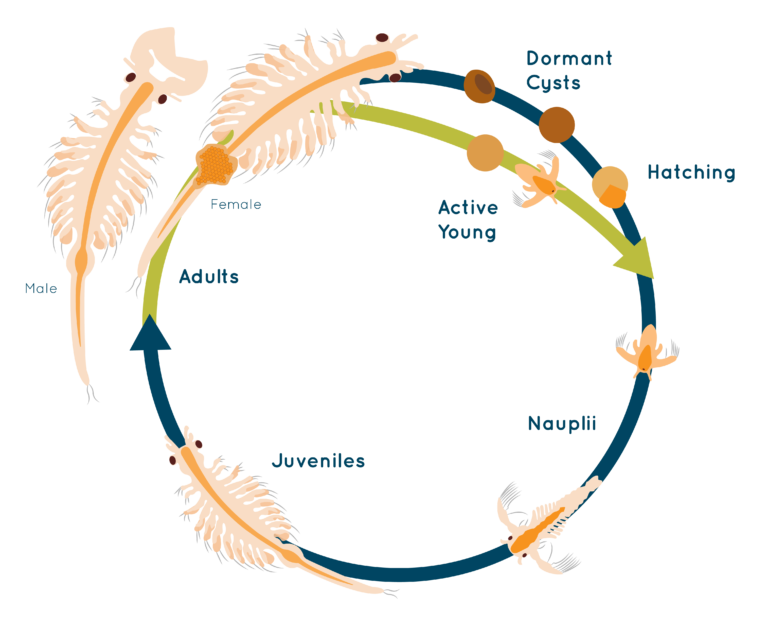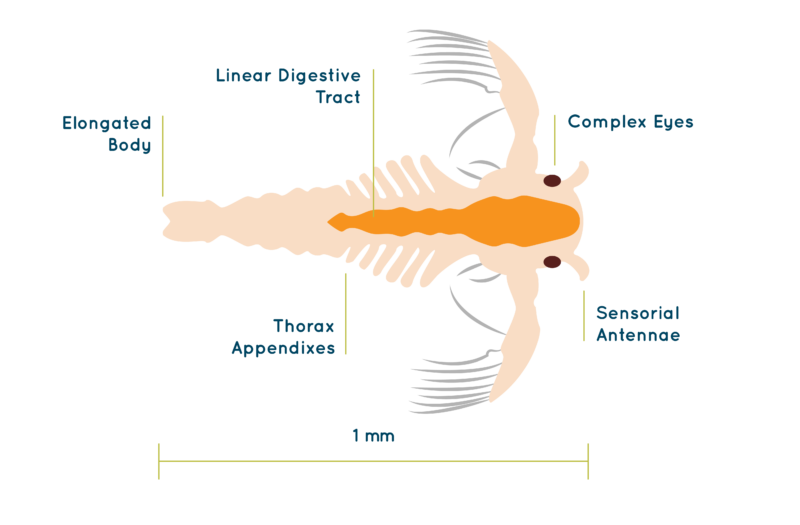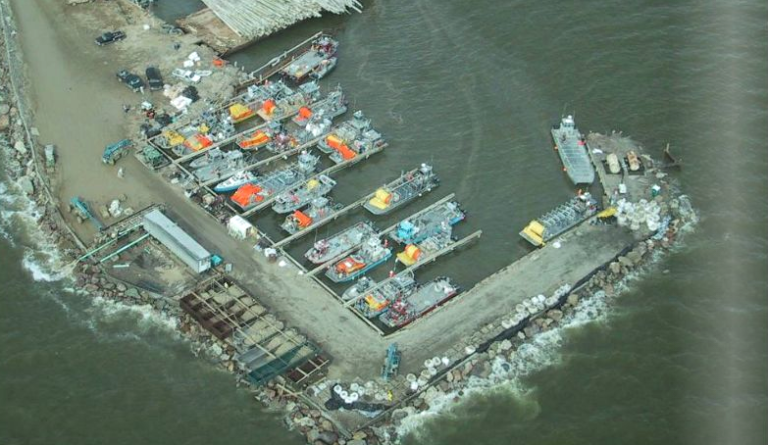Artemia
Artemia, also known as brine shrimp, are tiny crustaceans that have been used for years as the starter feed for a number of species, specially in shrimp and fish farming. The adults are approximately one centimeter long and only appear in waters of high salinity. The Artemia cysts are collected from different salt lakes, cleaned and conditioned, then dry processed and shipped to aquaculture farms all over the world. The cysts, are then stored until needed and hatched as live food.
Fun facts – Did you know that Artemia are sold as children’s pets under the name of Sea Monkeys?
Artemia eggs? Many refer to Artemia as eggs, but in reality a cyst is an embryo packed in a shell.
Artemia life cycle

Like other crustaceans, Artemia goes through a complex life history cycle; from cysts to nauplii and to its adult stage – in favorable conditions. To cope with harsh and complex habitats such as salt lakes, Artemia are able, when the circumstances become adverse, release their offspring into a dormant, encysted state, rather than simply releasing swimming nauplius, to ensure survival.
Besides preventing mechanical damage, the cyst shell also plays an important role in protecting the embryo within from other lethal environmental stresses. If unfavorable conditions persist, however, dried Artemia cysts are able to persist these conditions and can be stored for many years.

The genus comprises both a limited number of sexual species, and a variety of parthenogenetic populations. The distribution of these types and species over the globe is highly asymmetric; throughout the Americas, the sexual Artemia franciscana is found, and in the extreme south of South America Artemia persimilis. In other continents the other sexual species and parthenogenetic populations occur.
Brine shrimp species are differentiated by using a set of characterization tools, such as the study of morphometrics, SEM analysis, cross-breeding and the use of molecular markers.
Artemia cysts are well known as a primary feed for the larval stages of various shrimp and fish species. They are also vital for hatcheries to achieve robust juvenile production. Live feed provides important nutrients and assist the larval digestive processes via a contribution of digestive. In aquaculture, the characteristics, convenience and cost-effectiveness of Artemia have turned them into the most widely used live feed for fish and crustaceans.
Artemia cysts:
- Available all year around
- Can be stored
- Easily hatched into live nauplii in less than 24-hour incubation in seawater
Artemia nauplii:
- Visible with bare eyes and easy to catch
- Suitable size as larval feed
- Stimulate the feeding response of marine fish and shrimp
- Highly nutritious: rich source of protein, lipids, especially unsaturated fatty acids, carbohydrates and digestive enzymes
- Adaptable nutritional profile
In order to ensure quality and meet productivity and biosecurity standards, INVE Aquaculture uses a series of patented technologies to transform regular Artemia cysts into a product with additional features and characteristics.
Artemia has a non-selective filter-feeding behavior, which allows to customize the biochemical composition of live nauplii to meet the specific nutritional requirements of larvae.
Artemia’s nutritional profile enrichment can be done with nutritional components such as essential fatty acids, hormones and antibiotics critical to the development of fish and shrimp larvae. Readily available live feed was a breakthrough in the production of many marine fish and shrimp species and facilitated the rapid expansion of aquaculture for decades.
Artemia’s striking properties have enabled large-scale aquaculture. For a long time Artemia cysts were simply harvested from the shoreline and distributed as a ‘raw’ product. But due to seasonal and regional variations, differences between sub-species, contamination of the product with sand and other external substances… the efficient and safe use of Artemia as a live feed required a more structured and responsible approach.
Decades of intensive research and development have led to the sophisticated live feed resource aquaculture knows today: a carefully processed product, namely the dry cysts that produce live nauplii within 24 hours after incubation.
Thanks to superior processing and fingerprinting techniques, cysts can be packed and labelled according to their specific characteristics such as size, hatching capacity and nutritional value, regardless of their strain or origin.
Advanced and patented technologies make it possible to break the embryos’ dormancy on demand for optimal hatching efficiency, to easily separate the empty cyst shells from the nauplii after hatching and to secure the Artemia’s biosecurity and energetic content with innovative processes and enrichment (Selco) products.
This means that in an ideal situation every hatchery can procure the exact Artemia that is most suited for its specific application needs, without having to dread any kind of unpredictable outcome.
Learn more about the hatch & collect processHarvest
The ecological niche where Artemia thrive is indeed a harsh environment to other aquatic invertebrates. Temperature affects Artemia distribution, but it’s their capacity to survive in high salinity environments that provides a competitive advantage to escape from predators and biological competitors.
The cysts are harvested in natural salt lakes and ponds worldwide. Today we are at a point where the world’s most interesting Artemia resources have been identified and are exploited to their full capacity while maintaining a sustainable harvesting rate. All together these sources provide a global supply of around 3,000 metric tons per year. Unlike global aquaculture which is expected to keep on growing exponentially, the Artemia supply will remain more or less stable at its current capacity.



